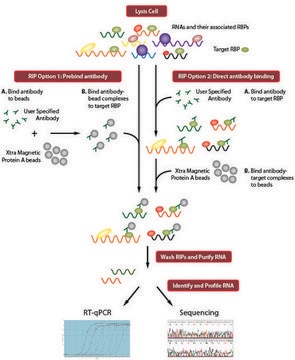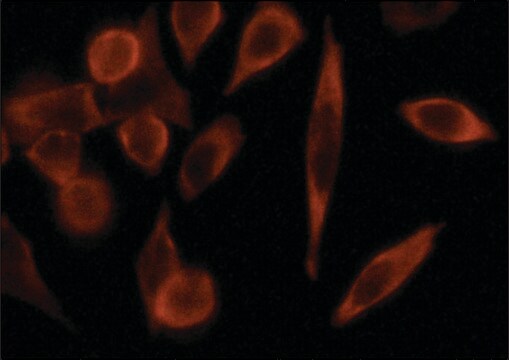MABF125
Anti-TAP1 Antibody, clone mAb 148.3
clone mAb 148.3, from mouse
Sinônimo(s):
Antigen peptide transporter 1, APT1, ATP-binding cassette sub-family B member 2, Peptide supply factor 1, Peptide transporter PSF1, PSF-1, Peptide transporter TAP1, Peptide transporter involved in antigen processing 1, Really interesting new gene 4 prote
About This Item
Produtos recomendados
fonte biológica
mouse
Nível de qualidade
forma do anticorpo
purified immunoglobulin
tipo de produto de anticorpo
primary antibodies
clone
mAb 148.3, monoclonal
reatividade de espécies
human
técnica(s)
activity assay: suitable
immunofluorescence: suitable
immunoprecipitation (IP): suitable
western blot: suitable
Isotipo
IgG1κ
nº de adesão NCBI
nº de adesão UniProt
Condições de expedição
wet ice
modificação pós-traducional do alvo
unmodified
Informações sobre genes
human ... TAP1(6890)
Descrição geral
Imunogênio
Aplicação
Western Blotting Analysis: A representative lot from an independent laboratory detected TAP1 in microsomes of baculovirus-infected SF9 cells, which express wild type or select mutations of TAP1 (Chen, M., et al. (2004). J Biol Chem. 279(44):46073-46081.).
Western Blotting Analysis: A representative lot from an independent laboratory detected TAP1 in SF9 cells infected with recombinant baculovirus containing TAP1 gene constructs (Meyer, T. H., et al. (1994). FEBS Lett. 351(3):443-447.).
Immunofluorescence Analysis: A representative lot from an independent laboratory detected TAP1 in HeLa cells contransfected with wild type TAP1 and TAP2 (Hulpke, S., et al. (2012). Cell Mol Life Sci. 69(19):3317-3327.).
Immunofluorescence Analysis: A representative lot from an independent laboratory detected TAP1 in SF9 cells infected with rBV-TAP1/rBV-TAP2 (Meyer, T. H., et al. (1994). FEBS Lett. 351(3):443-447.).
Immunoprecipitation Analysis: A representative lot from an independent laboratory immunoprecipitated TAP1 from SF9 cells infected with rBV-TAP1/rBV-TAP2 (Meyer, T. H., et al. (1994). FEBS Lett. 351(3):443-447.).
Activity Assay Analysis: This antibody inhibits TAP-specific peptide transport (Plewnia, G., et al. (2007). J Mol Biol. 369(1):95-107.).
Qualidade
Western Blotting Analysis: 0.5 µg/mL of this antibody detected TAP1 in 10 µg of Interferon-gamma (IFN-g) treated HeLa cell lysate.
Descrição-alvo
forma física
Outras notas
Não está encontrando o produto certo?
Experimente o nosso Ferramenta de seleção de produtos.
Código de classe de armazenamento
12 - Non Combustible Liquids
Classe de risco de água (WGK)
WGK 2
Ponto de fulgor (°F)
Not applicable
Ponto de fulgor (°C)
Not applicable
Certificados de análise (COA)
Busque Certificados de análise (COA) digitando o Número do Lote do produto. Os números de lote e remessa podem ser encontrados no rótulo de um produto após a palavra “Lot” ou “Batch”.
Já possui este produto?
Encontre a documentação dos produtos que você adquiriu recentemente na biblioteca de documentos.
Nossa equipe de cientistas tem experiência em todas as áreas de pesquisa, incluindo Life Sciences, ciência de materiais, síntese química, cromatografia, química analítica e muitas outras.
Entre em contato com a assistência técnica








